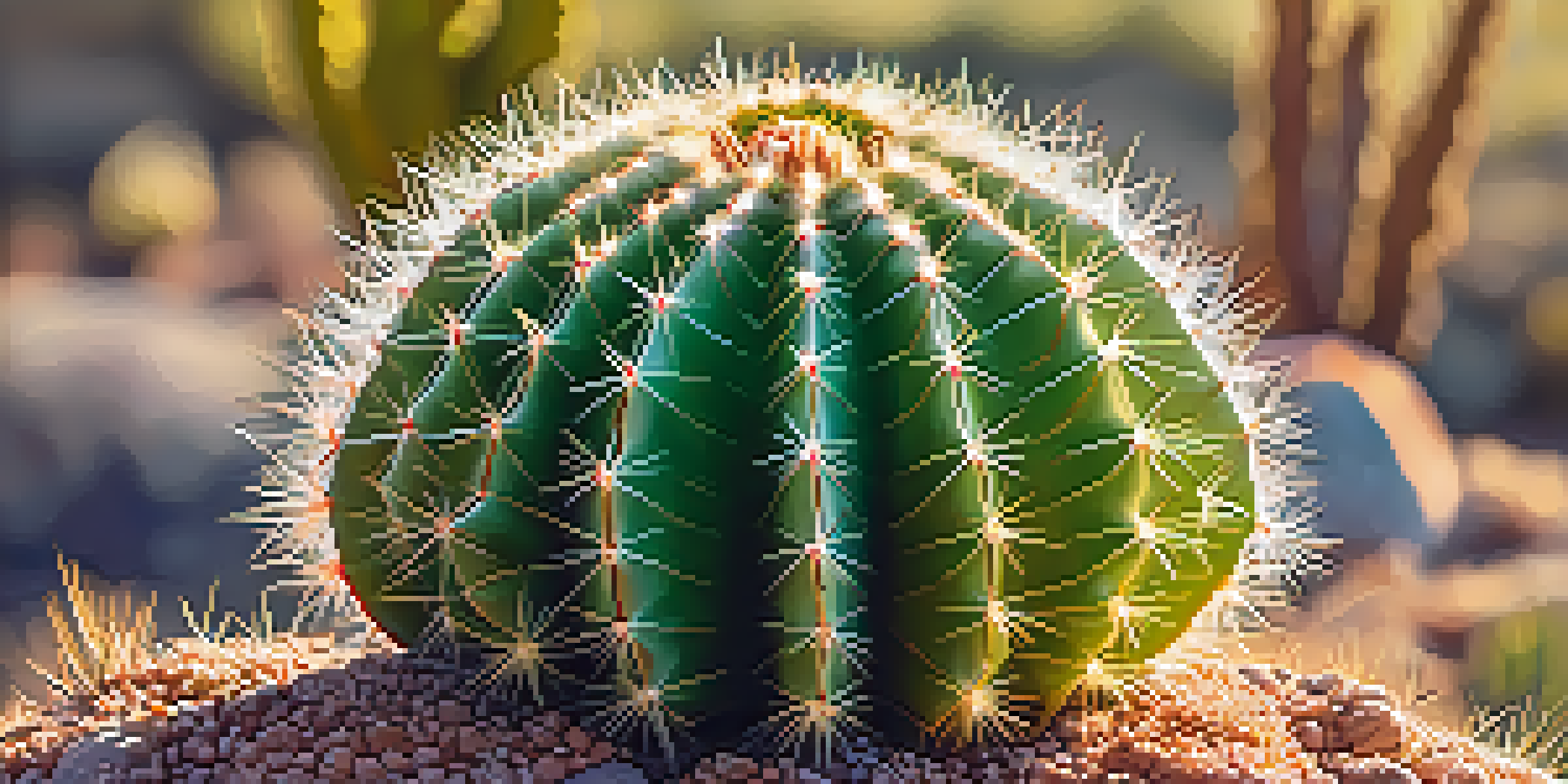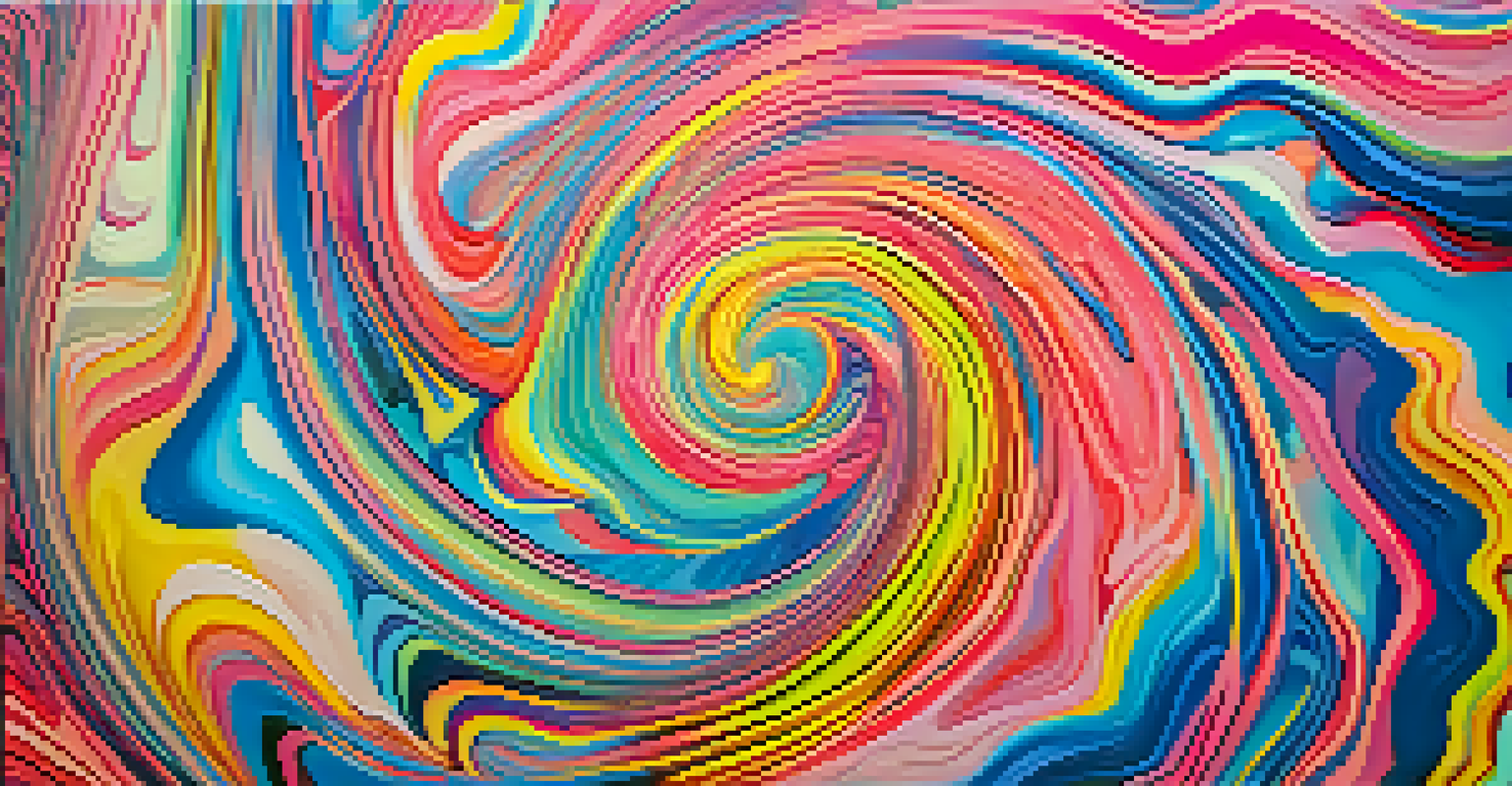Psychedelics Unveiled: Peyote vs. LSD and Their Unique Effects

Understanding Psychedelics: An Overview
Psychedelics are substances that alter perception, mood, and cognitive processes. Commonly known for their mind-expanding effects, these compounds have been used for centuries in various cultures for spiritual and therapeutic purposes. While many people think of psychedelics as a singular category, it's essential to recognize the unique characteristics of each substance.
Psychedelics can help us to understand the interconnectivity of all life and the importance of experiencing our thoughts and feelings more deeply.
Among the well-known psychedelics, Peyote and LSD stand out due to their different origins and effects. Peyote is a small cactus native to Mexico, revered in Indigenous cultures for its psychoactive properties. In contrast, LSD, or lysergic acid diethylamide, is a synthetic compound created in the 20th century, known for its potent psychological effects.
Related Resource
Understanding these two substances requires looking beyond their chemical structures to their experiential impacts. Both Peyote and LSD offer profound insights and altered states of consciousness, yet each has a distinct pathway for how they influence the mind and body.
Peyote: A Sacred Cactus with Ancient Roots
Peyote has been used for thousands of years, primarily among Indigenous peoples in the Americas, for healing and spiritual rituals. The psychoactive ingredient in Peyote is mescaline, which induces vivid visual and auditory hallucinations, as well as deep introspective experiences. For many, consuming Peyote is not just about the trip; it’s a sacred ritual that fosters community and personal growth.

The experience of Peyote can last anywhere from 10 to 12 hours, offering a lengthy journey into altered consciousness. Users often describe feelings of connectedness to nature and a greater understanding of self and others. This connection is often accompanied by visual distortions, vibrant colors, and profound emotional shifts.
Psychedelics Have Unique Effects
Psychedelics like Peyote and LSD offer distinct experiences influenced by their origins, compositions, and cultural contexts.
Unlike some other psychedelics, Peyote is typically taken in a ceremonial context, which can enhance its effects and significance. This ritualistic approach contributes to its power, allowing individuals to explore their inner selves in a supportive setting that respects the plant's cultural importance.
LSD: The Synthetic Psychedelic Revolution
LSD emerged in the 1940s and quickly gained notoriety for its intense psychological effects. Unlike Peyote, which is naturally occurring, LSD is synthesized from ergot, a fungus that grows on rye. This synthetic origin has led to a reputation of being a 'laboratory-created' psychedelic, but the experiences it provides are just as profound.
The experience of psychedelics is not just a chemical event; it is a journey into the mind and spirit that can lead to profound personal transformation.
The effects of LSD can last between 8 to 12 hours, often characterized by a heightened sense of awareness and sensory perception. Users frequently report seeing intricate patterns, experiencing synesthesia (where senses blend), and feeling an overwhelming sense of connection with the universe. These experiences can lead to significant personal insights and creative breakthroughs.
Related Resource
LSD is often associated with the counterculture movements of the 1960s, where it was embraced for its mind-expanding properties. Despite its controversial history, LSD has remained popular and is increasingly being studied for its potential therapeutic benefits, particularly in mental health treatments.
Comparing Effects: Peyote vs. LSD
While both Peyote and LSD are classified as psychedelics, their effects can differ significantly due to their chemical compositions and the contexts in which they are used. Peyote tends to induce a more grounded, earthy experience, often leading to deep emotional and spiritual insights. In contrast, LSD is known for its intense visual and cognitive alterations, creating a more expansive and sometimes overwhelming experience.
A user might find that Peyote encourages a reflective journey, where introspection and emotional healing are at the forefront. On the other hand, LSD may stimulate a whirlwind of thoughts and ideas, making it more conducive for creative exploration and abstract thinking. This distinction highlights how personal preferences and intentions can shape one’s psychedelic experience.
Cultural Importance of Peyote
Peyote is deeply embedded in Indigenous spiritual practices, emphasizing community and healing through ceremonial use.
Furthermore, the setting in which these substances are consumed plays a crucial role in their effects. Peyote rituals, often conducted in a ceremonial context, may enhance the experience's spiritual aspects, while LSD might be used in various settings, ranging from festivals to personal introspection sessions.
Cultural Significance: Peyote's Spiritual Role
Peyote holds a revered place in the spiritual practices of many Indigenous cultures, particularly among Native American tribes. Its use is often accompanied by traditional ceremonies that emphasize healing, community bonding, and connection to the divine. This cultural significance shapes the way Peyote is experienced, fostering a deep respect for the plant and its powers.
The rituals surrounding Peyote involve prayer, singing, and sharing stories, all of which contribute to a communal experience that enhances its effects. Participants often leave these ceremonies with a renewed sense of purpose and clarity. This contrasts with the often more individualistic approach to using LSD, where the experience may not include such communal elements.
Related Resource
Understanding the cultural context of Peyote is essential for appreciating its effects fully. The ritualistic use of Peyote not only serves spiritual purposes but also emphasizes the importance of tradition and collective identity among Indigenous communities.
LSD in Modern Society: Therapeutic Potential
In recent years, LSD has seen a resurgence in interest, particularly in the realm of mental health treatment. Research has suggested that LSD may have therapeutic benefits for conditions like anxiety, depression, and PTSD. This shift in perception from a recreational drug to a potential therapeutic agent marks a significant change in how society views psychedelics.
Studies show that LSD can facilitate profound emotional breakthroughs during therapy sessions, allowing individuals to confront and process deep-seated traumas. This therapeutic context is quite different from the more recreational use that characterized the 1960s. Today, the focus is on creating safe, supportive environments where the benefits of LSD can be harnessed responsibly.
LSD's Therapeutic Potential
Recent research suggests LSD may be beneficial for treating mental health conditions, shifting its perception from recreational use to therapeutic applications.
As we continue to explore the potential of psychedelics in mental health, the conversation around LSD is evolving. The scientific community is increasingly recognizing its value, paving the way for more rigorous research and, potentially, broader acceptance of psychedelics as legitimate treatment options.
Legal and Ethical Considerations: Peyote and LSD
The legal status of Peyote and LSD varies significantly across different regions, reflecting their cultural significance and historical contexts. Peyote is legally protected for certain Indigenous groups in the United States, allowing them to use it in religious ceremonies. However, outside these contexts, it remains illegal, highlighting the complex relationship between cultural heritage and modern law.
On the other hand, LSD is classified as a Schedule I substance in the United States, making it illegal to manufacture, distribute, or possess. Despite its potential benefits, the legal framework surrounding LSD poses significant barriers to research and therapeutic use. This dichotomy raises important ethical questions about access to these substances and the rights of individuals to explore their consciousness.

As more research emerges showing the potential benefits of psychedelics, discussions around their legal status are becoming increasingly critical. Advocates argue for a reevaluation of laws governing psychedelics, emphasizing the importance of accessibility for therapeutic purposes while respecting cultural practices surrounding substances like Peyote.